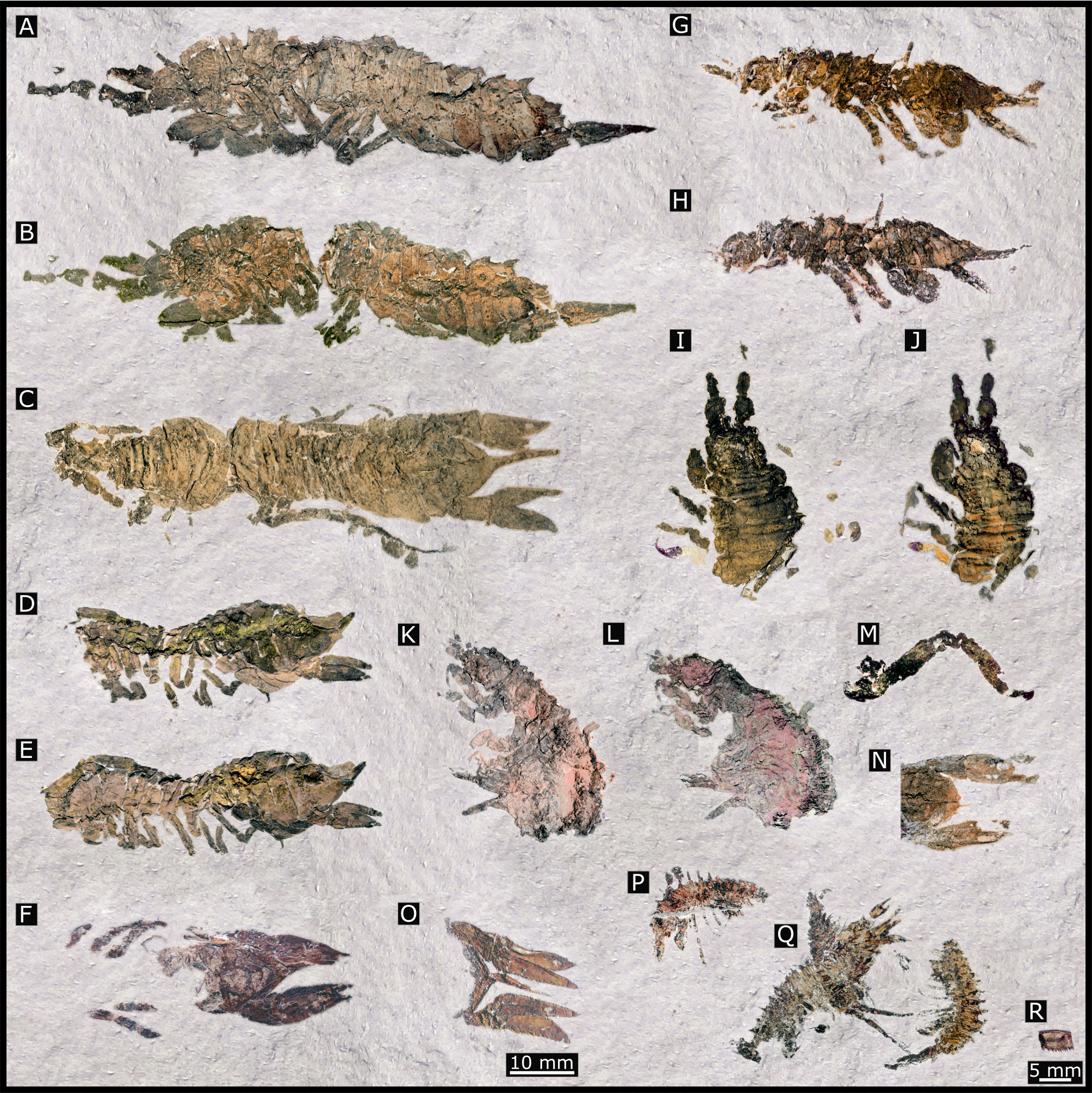THE LONG TRAIL: A CHIMERA-LIKE FOSSIL CRUSTACEAN INTERPRETED AS DECAPODA, STOMATOPODA, AMPHIPODA AND FINALLY ISOPODA
DOI:
https://doi.org/10.13130/2039-4942/15699Keywords:
Peracarida; Isopoda; Permian; Paraná Basin; morphometric analysis; convergent evolution.Abstract
The process of interpreting and evaluating a fossil is a difficult task. Isopoda is a species rich group of peracarid eumalacostracans which represent quite a challenge when found as fossils, independent of whether we are working with fragmentary or more complete specimens. Here we describe a new fossil species of crustacean, Platuropodus odysseus n. gen. n. sp., from the Irati Formation, Permian of Paraná Basin, Brazil. After misinterpretations, the fossil taxon is recognised here as a representative of Isopoda. The new species presents characters found in Phreatoicidea, Asellota and Oniscidea in a unique combination for the fossil and extant record, such as two pairs of sub-chelate anterior trunk appendages, a short region after the anus and flat uropods. This chimera-like morphology and a morphometric analysis of the sub-chelae indicate convergent evolution in the early diversification of Isopoda. The morphological diversification present in the Palaeozoic and Mesozoic fossil record of Eumalacostraca indicate a “push of the past” effect in different ingroups of Peracarida.
Metrics

Downloads
Additional Files
Published
Issue
Section
License

This work is licensed under a Creative Commons Attribution-NonCommercial-NoDerivatives 4.0 International License.
The journal allow the author(s) to hold the copyright without restrictions.






